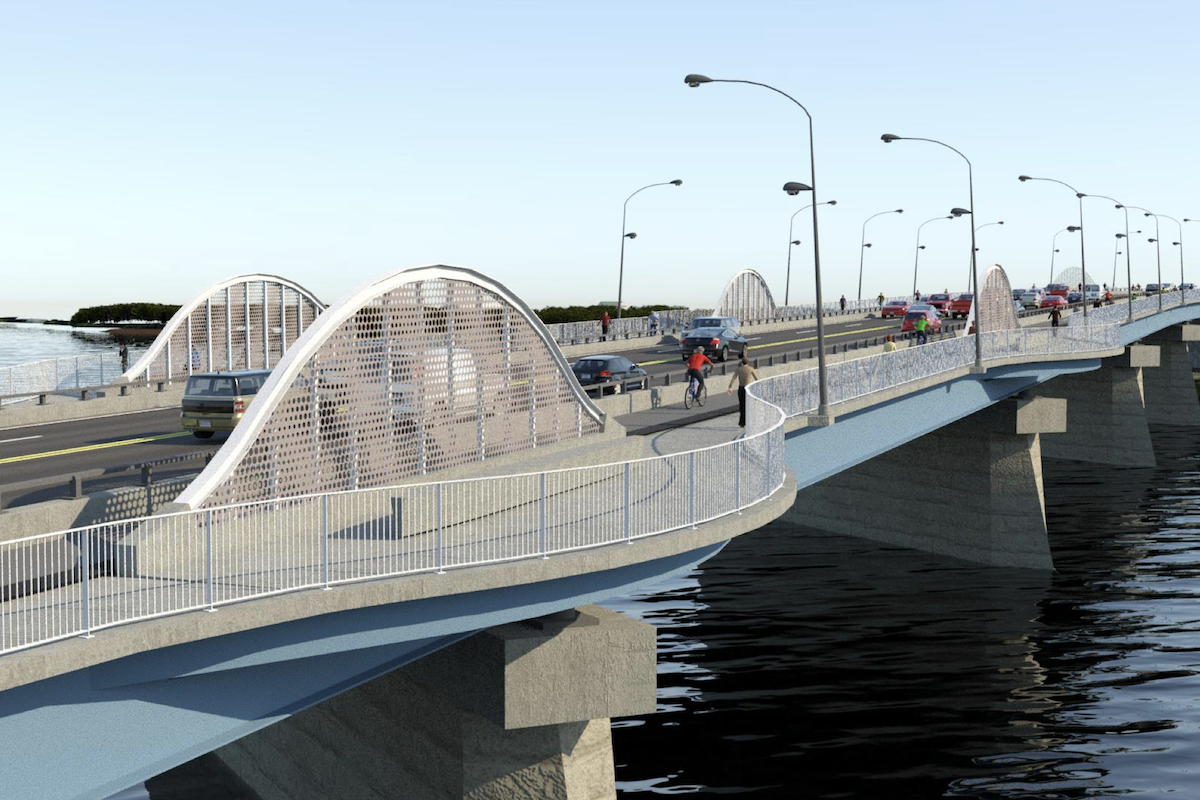Wadsworth Boulevard experienced its last real improvements decades ago. The Colorado Department of Transportation (CDOT) widened Wadsworth Boulevard in the 1950s, but this is the first comprehensive project since that time. In recent years, concerns have increased over issues along the corridor such as safety, poor traffic operations, lack of access management, and lack of multimodal accommodations. Now underway, however, is a massive infrastructure construction project designed to address these issues and provide additional benefits to area motorists — the Wadsworth Improvement Project, also known as Improve Wadsworth.
The purpose of this project is to transform Wadsworth Boulevard from 35th Avenue to Interstate 70 into a multimodal facility that enhances traffic operations, improves access management and multimodal accommodations, and supports the vision of a livable, walkable mixed-use corridor. The project includes modernizing Wadsworth from 35th Avenue to I-70 with an added third lane in both directions and new safe and efficient continuous flow intersection (CFI) designs at 38th and at 44th Avenues.
Other features of the Wadsworth Improvement Project include:
- Raised center median from 35th Avenue to I-70
- Reconfigured intersections to improve safety
- Consolidated access points and driveways
- Continuous sidewalk on the west side of Wadsworth
- Multi-use trail on the east side of Wadsworth
- 12-foot-wide landscape zones between travel lanes and sidewalks/paths

| Your local Hyundai dealer |
|---|
| Equipment East |
Public art, focused on the agricultural beginnings of Wheat Ridge, will be placed throughout the project corridor including sculptural art depicting celery, wheat berries, and carnations.
The project extends from 35th Avenue on the south to Interstate 70 on the north, approximately 1.5 miles. The total project cost, including design, environmental analysis, property acquisition, and construction, is approximately $82 million, making it the largest infrastructure project ever led by the city. Federal, state, and regional partners have funded more than 75 percent of this project. Wheat Ridge voters approved a sales tax increase in 2016 to assist with funding a portion of the project. Construction began in November 2021, and work is projected to be complete by the spring of 2026.
“Wadsworth is a one of the main transportation corridors serving Wheat Ridge,” said Maria D’Andrea, City of Wheat Ridge Public Works Director. “This route connects Wheat Ridge residents to the interstate highway (I-70) to the north and is a major corridor for commuters as well as some commercial traffic for businesses in Wheat Ridge. Following project completion, Wadsworth will also be a great route for pedestrians and cyclists with the new trail connection facilities.
“Currently, the corridor between 35th Avenue and I-70 has two travel lanes in each direction with separate left-turn lanes at some signalized intersections. There are dedicated right-turn lanes at some street intersections and businesses. Most of the corridor lacks sidewalks and there are no suitable bicycle facilities.”
Primary contractor on this design-build project is Concrete Works of Colorado (CWC), based in Lafayette, Colorado. CWC, which has been delivering projects in the Rocky Mountain region for over 45 years, is self-performing approximately 80 percent of the work — the company's largest project to date.
Major subcontractors are: Sturgeon Electric (lighting, electrical, and signals); Ludwig Drilling (caisson retaining wall drilling); Baerren Concrete (soil nail walls and sculpted shotcrete); and Powell Restoration (irrigation and landscaping).
Illustrating the size of the project are some estimated quantities utilized:
- Aggregate base course: 28,800 tons
- Concrete pavement, 10-inch: 75,500 square yards
- Concrete: 28,000 cubic yards across all pay items
- Storm sewer: 13,600 feet
- Curb and gutter: 15,200 feet
As the project progresses, maintenance of traffic, closures, detours, and access to affected businesses have been carefully planned and communicated to the public.
“The project is limited to overnight lane closures and a single-lane closure in the northbound direction on weekdays during off-peak hours,” D'Andrea said. “Prior to construction there were two northbound and two southbound lanes. With few exceptions, the project has been able to maintain pre-construction traffic conditions by building temporary roadway adjacent to the road. ... Ultimately, there will be three lanes in each direction, so the team has taken advantage of the future width to help maintain the current conditions as best as possible.
“'What’s Up Wheat Ridge' is the city’s online engagement platform where community members can read weekly construction updates and learn about the project. Wheat Ridge also sends text or email traffic alerts to over 600 opt-in subscribers.”
Marc Lenart, President of Concrete Works of Colorado, added, “Building and maintaining relationships along the corridor is critical to the success of the project. Working in an urban corridor is extremely dynamic. We perform our own traffic control management. Self-performing traffic control is a key differentiator for us. We also partner with Wheat Ridge and their communication consultant to provide advanced notice and project updates on a regular basis.”
“A CFI intersection is an innovative design that improves safety and traffic operations by redirecting left-turns,” D'Andrea said. “Instead of turning left from the center lane at the intersection, left-turning vehicles will cross the oncoming traffic lanes about a block prior to reaching the intersection. The left-turning vehicles will wait on the far-left side of the road behind a raised median and be given a signal phase to turn when the through traffic is moving.
“Because the left-turns are accommodated by the continuous flow intersections, they will be prohibited at the main intersection. Other than the displaced left turns, the intersections at 38th Avenue and 44th Avenue will have conventional through lanes, northbound and southbound right-turn lanes, and raised medians. Overhead signage in the median will provide additional direction for drivers to navigate these intersections. All other intersections along the corridor will have conventional intersection design features.”
Among the benefits of CFIs:
- Efficient traffic control
- Potential reduction of fatal and serious crashes
- Occupies less space than a traditional intersection
“This project required extensive utility coordination. Existing communication lines were previously installed underneath Wadsworth pavement. Over the years, more communication lines were installed around an active gas line. Constructing a joint utility trench (7 feet deep and approximately 3 feet wide) and coordinating relocation of six communication utilities into the trench was a major undertaking. The joint trench, which is located underneath the new sidewalk, was selected as the solution to avoid future utility repairs in the road.
“Excavating for the new Clear Creek Trail connection and a water quality pond uncovered a dumping ground for old construction debris. Over-excavation was required to haul off the unsuitable material. Replacing major utilities and maintaining traffic and access on a state highway that serves over 43,000 vehicles a day is complex. As each section of road is constructed, driveways are crossed several times, first for joint utility trench, then the sanitary sewer, followed by the storm sewer, waterline, and storm sewer system. When concrete paving began, the same level of coordination and access management was expected.”
A large, drilled shaft retaining wall on the northbound side of Wadsworth south of Interstate 70 was the first critical path item to be constructed. Constructing the wall first was necessary to create a work area for underground utility relocation. Approximately 1,400 linear feet of 42-inch and 36-inch drilled shafts extend over 40 feet below existing ground. The architectural shotcrete stone finish creates a major gateway at the north city limits. Wall construction required benching techniques and specialized drilling including clay slurries and steel casings to address site conditions.
CWC proposed using recycled asphalt pavement milled from the project as Class 6 road base. Over 30,000 tons of recycled asphalt has been re-purposed as road base, reducing the need for hauling and importing new material. This practice is used elsewhere on large roadway projects and is an innovative way to provide a quality pavement section and reuse on-site material to reduce waste.
The contractor erected a temporary batch plant at the north end of the project to supply the project needs. The concrete pavement section is 10 inches thick. The sidewalk and shared-use path are also concrete.













































































